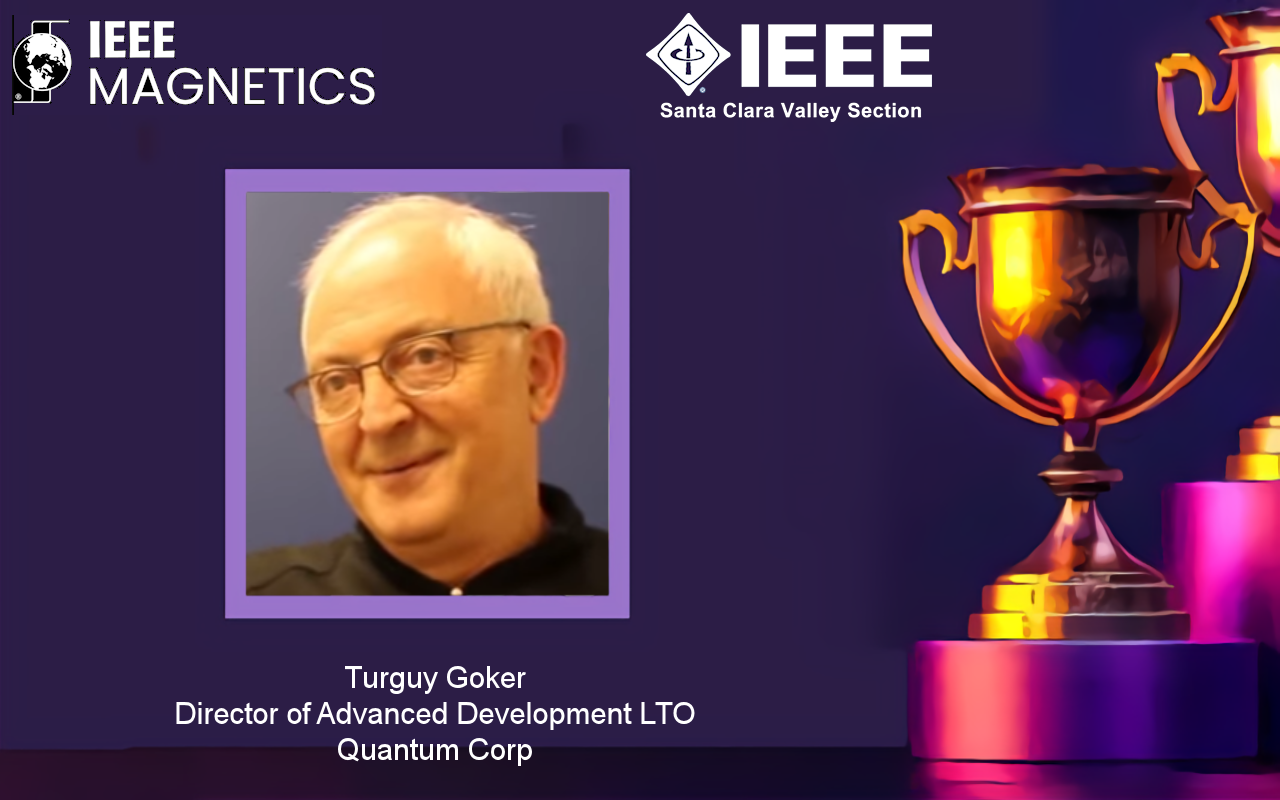Tape Roadmap and Challenges with using new High Areal Density Tapes
A talk by Turguy Goker of Quantum on challenges of new tape technology
This is a hybrid webinar
ONLINE via Zoom or IN PERSON at Quadrant
As the LTO tape roadmap advances toward significantly higher capacities, the industry is undergoing a paradigm shift in how those gains are achieved. Traditionally, increased capacity came from expanding tape length and increasing linear bit and track densities together, enabled by larger recorded bits on thicker media. However, beginning with LTO-8, the focus has shifted to higher track densities and thinner, longer tape substrates—a transformation that brings both opportunity and complexity.
This transition introduces a new set of engineering and operational challenges. With thinner media and smaller recorded bit dimensions, the number of wraps and head passes per full volume increases significantly. As a result, tape systems are becoming more sensitive to environmental conditions, including temperature, humidity, and airborne debris. These changes mainly due to smaller bit dimensions place added pressure on Tape Dimensional Stability (TDS) control mechanisms and contribute to elevated Tape Alerts and Drive Errors, especially in real-world usage scenarios.
Innovations in LTO-10, such as the tilted head and servo format architecture (the Pisa head) and new cleaning mechanisms, represent a major leap in addressing these challenges. This new format allows precise compensation for tape dimensional changes, improving tape-to-head alignment. However, such innovations are just one part of the broader strategy needed to ensure reliable tape performance at scale.
In parallel, modern data architectures are redefining tape’s role. Tapes are no longer just archival media stored offsite for disaster recovery. In today’s tiered storage ecosystems, data on tape must be randomly accessible, highly durable, and maintain multi-9s reliability over lifespans exceeding ten years. This shift requires that tapes perform reliably not just at write time, but throughout their lifecycle as active data assets.
To meet these demands, the industry must adopt:
- Advanced host-level tape and drive management algorithms
- Researching and implementing ML based algorithms for Real world tape Alerts and errors and estimating data durability and availability
- Integration of erasure coding, redundancy models with new RAIL based Library architectures
This presentation will focus into the magnetic data tape technological innovations, real-world tape alerts and errors, and architectural changes shaping the next generation of tape storage. Emphasis will be placed on understanding the interplay between environmental variables and system performance, and how innovation at system and Library level is essential to ensuring long-term reliability in this new era of high-capacity tape systems.
Date and Time
Location
Hosts
Registration
-
 Add Event to Calendar
Add Event to Calendar
Loading virtual attendance info...
- 1120 Ringwood Ct
- San Jose, California
- United States 95131
- Click here for Map
- Starts 02 July 2025 07:00 AM UTC
- Ends 11 September 2025 07:00 PM UTC
- 5 in-person spaces left!
- No Admission Charge
Speakers
Turguy
Turguy Goker is the Director of Advanced Development LTO for Quantum Corp. He has been in the tape drive industry for over 30 years as a magnetic recording technologist specializing in servo and signal processing technologies, designing, and developing LTO drives, media, and tape formats. As Technical Team Leader he represents Quantum in the LTO organization and since 2015 has been the Chairman of the Board for the Information Storage Industry Consortium (INSIC) which focuses on research for the worldwide information storage industry, mainly tape technology roadmaps.
Turguy was a key member of an R&D team that was responsible for the original LTO project, collaborating with HP and IBM in formatting what is today’s LTO organization and tape technology. Turguy has more than 50 patents in the tape technology field specifically in servo control, logical and physical tape formats, data detection, and Erasure Coding. As an LTO researcher, he was selected for the Technology Hall of Fame with Seagate, Certance, and Quantum. He has an MSEE and BS from San Diego State University.
Address:California, United States
Agenda
| 6:30 - 7:00 | Socializing and Networking at Quadrant |
| 6:55 | Zoom session will be online with Waiting Room |
| 7:00 - 7:45 | Lecture begins, online and in person |
| 7:45 - 8:00 | Questions and Answers |


